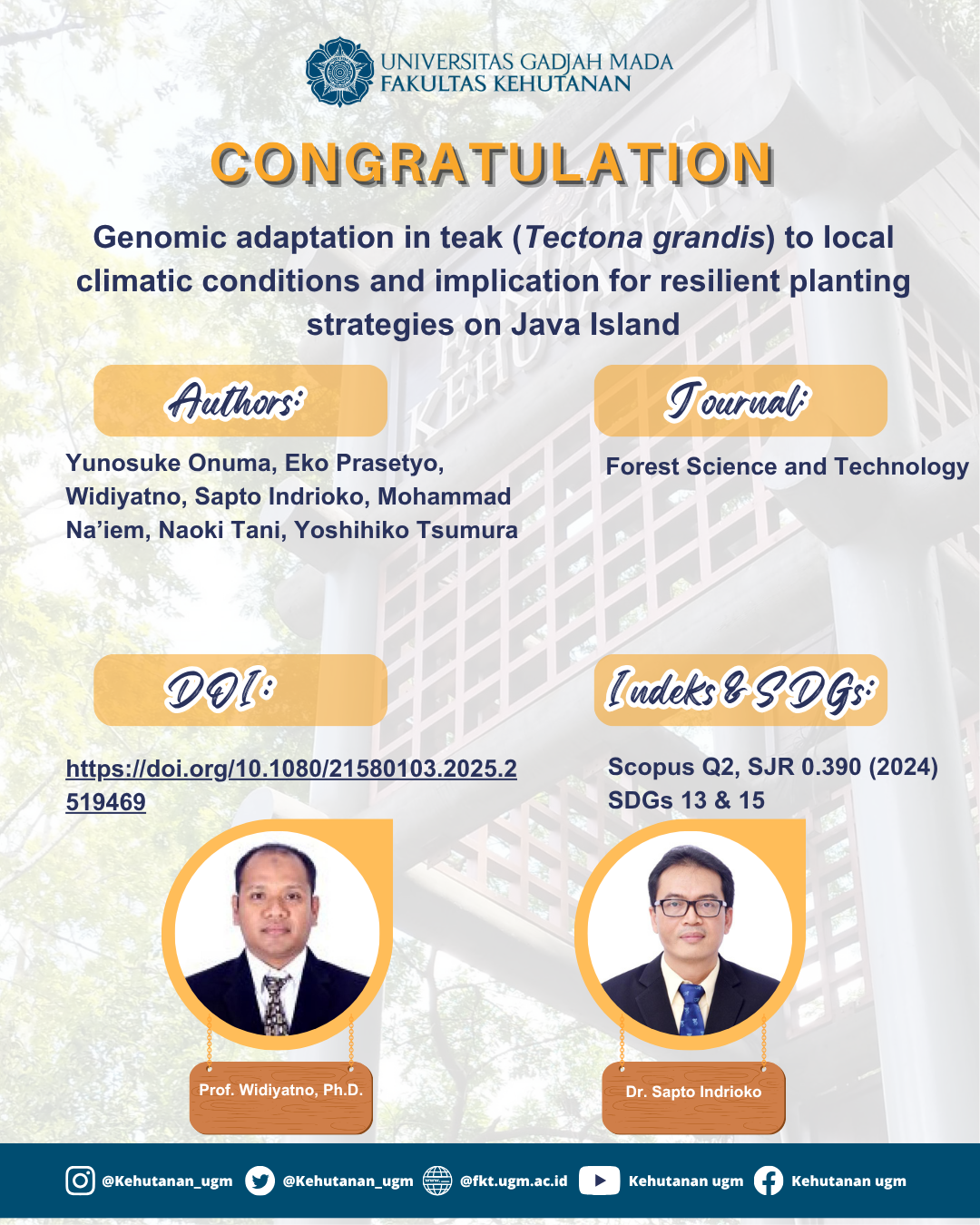
Abstract
Teak (Tectona grandis) is a valuable tropical tree species that is widely planted in more than 65 countries, including extensive plantations on Java Island, Indonesia. Java plays a critical role in global teak production. However, few studies have assessed the genetic diversity and local adaptation of this species using genome-wide sequencing data across its natural distribution and Indonesian landraces. Analysis of genetic structure and local adaptation can provide information on the genetic origin and indicate the genetic adaptation capacity. Such information can inform the planning of more resilient planting strategies against the projected future climate change, which can contribute to sustainable forest management. Climate change is expected to alter suitable habitats for teaks, thus negatively impact teak production on Java. Thus, this study aimed to elucidate climatic adaptations. We analyzed genomic data for eight natural origin teak populations (India, Thailand, Laos, and Myanmar) and nine Indonesian landraces, using approximately 9000 SNPs from dd-RAD seq analysis, to investigate genomic environmental adaptation to inform future teak planting in Java. Malabar, India, exhibited local allele frequency changes along climatic gradients. Additionally, this population exhibited a small genetic offset between the present and future projected climatic conditions compared with other regions. Thus, they may adapt to the local environment and have some resilience to projected future climatic conditions. Similarly, Indonesian landraces on Java also displayed a relatively small genetic offset, suggesting they may be less vulnerable to climate change when planted on Java.
SDGs:
SDG 13:Climate Action
SDG 15:Life on Land
Link Dokumen:
Download
